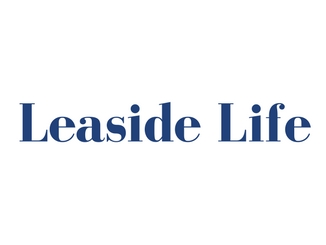
Do you ever walk or drive by a demolition/new build in Leaside and wonder, “How did that get built? I wonder if it’s legal?” And you continue on with your business.
But what if you are the neighbour and fear that you will have to live with the consequences of a builder’s non-compliance, like extra high side walls and building length, high overhanging decks, for as long as you live there?
In at least three cases the neighbours did something about it. They contacted the city and asked the building department to come out and check.
And in each of these cases subsequent investigations by Toronto Building confirmed that the homes were built in contravention of the zoning by-laws and the minor variances that were approved by the Committee of Adjustment. And also in these cases, the owners went to the Committee of Adjustment to attempt to legalize the “as built” structure, but the owners’ reapplications for variances were rejected by the Committee. This is where we are at in the case of 73 Donegall and 151 Airdrie, and we await next steps from the owners, either to make the building conform or to make an appeal to the Ontario Municipal Board. In the case of 27 Fleming the illegally built structure is to be demolished.
Here are the three illegals and their stories.
27 Fleming is no stranger to Leaside Life.
http://leasidelife.com/builder-wont-stop-city-does-nothing
This demolition and reconstruction project involved the flouting of numerous planning and building regulations including: proceeding with construction without approval for minor variances to the zoning by-laws and removal of walls so it no longer could be considered a “renovation”, unauthorized change of grade, and failure to display a building permit.
The house was sold in 2014. The new owner initially planned to make only cosmetic changes, but has now reluctantly agreed to demolish the existing structure. This “tower house”, which now has been ordered for demolition by North York Community Council, still does not have approval for a replacement. But the owner has now hosted a couple of “community consultation sessions“ on May 21 and 26 to display a new set of plans, and this will return to committee on July 9.
73 Donegall has some similarities to 27 Fleming. Construction on a replacement house was stopped after a neighbour questioned its compliance to the zoning by-laws. But its pre-history involved a big victory for neighbours at the OMB.
http://leasidelife.com/73-donegall-a-big-success-at-the-omb
The owner, having failed to win approval for a three-storey tower house, decided to live with the zoning – to build “as of right”.
So the house was demolished in late December of last year and foundations and walls for a new house quickly arose in January.
However, neighbours soon became disturbed at the height and massing and called Toronto Building. They came out to inspect and issued a stop work order. The owner decided to apply for variances to legalize the structure, which were rejected by the Committee of Adjustment.
151 Airdrie was still under construction, but much further along than the other two when neighbours questioned the height and massing of the house that they had opposed, but which nevertheless had been approved by the Committee of Adjustment the year before.
Among the variances approved at that time were a building height of 8.8 metres and the height of the exterior side walls to be 7 metres.
The structure was again before the Committee of Adjustment on June 11 this year to seek approval for a structure that is 9.1 metres in height and with a side wall height of 7.21 metres.
In such cases the committee’s policy is to treat the application as if it were part of the original application. Clearly a proposed height of 9.1 metres vs. the by-law height of 8.5 metres is excessive and does not meet the intent of the by-law or the Neighbourhood Policy of the Official Plan. The committee agreed and unanimously rejected the application.
So we have had three “re-applications” this year in Leaside that seek forgiveness rather than compliance. What a mockery of the process!
The committee, by refusing these re-applications, goes a long way to send a message to owners, their builders, and their agents that the process needs to be respected, not abused.
A question worth asking in all these cases, not just 151 Airdrie, is: How did this project get built without earlier intervention from Toronto Building?
You probably think; surely the building inspector comes out at key points in construction? Well, remember there’s only one inspector for the whole of Leaside, so he’s pretty stretched. Maybe they need more staff to handle the workload.
Another question is why the city continues to allow the owner to “declare” the variances. This is called the waiver approach, meaning that instead of getting the city’s zoning inspector to identify the variances that apply, the owners declare their own list of variances to the committee.
If they miss something on their list, they have to go back to committee later IF the omission is caught.
In the end it is vigilant neighbours that police the system.
Robert Ellis, neighbour to 27 Fleming and a lawyer, has been exemplary in documenting concerns, challenging staff, and generally bird-dogging not only 27 Fleming but other developments in the area.
We need more Robert Ellises, not only to make sure that owners build to the plans, as approved, but also to meet the ultimate objective – to protect the character of the area.
‘Giving back’ to help the fight

Robert Ellis is a corporate lawyer who didn’t really know the ins and outs of city by-laws and development rules. But he lives next door to 27 Fleming and when he decided to fight the monster home being built there in 2012 he got “solid support” from his neighbours.
He learned quickly and helped win the fight on his street.
Now he thinks he should be paying back to other neighbours the help he got from his own neighbours.
He’s helped with three other houses close to him, at 47 Parkhurst, 73 Donegall and 35 Fleming.
“The system is unfairly biased to developers,” he says. And he became frustrated with the city’s lack of enforcement.
So, he says, he may as well use what he learned to help get the system changed.





